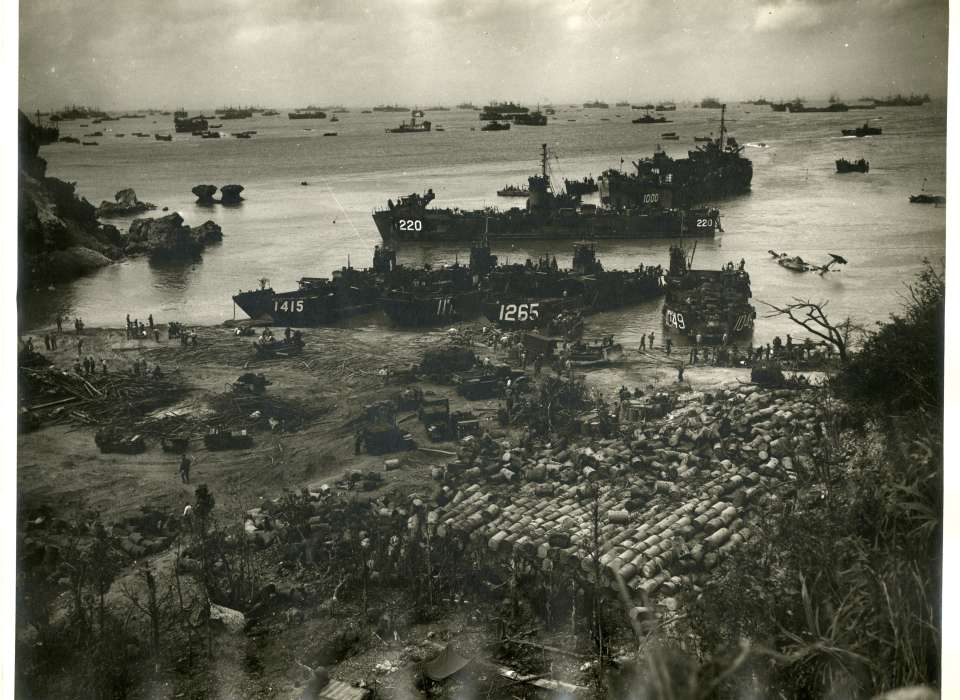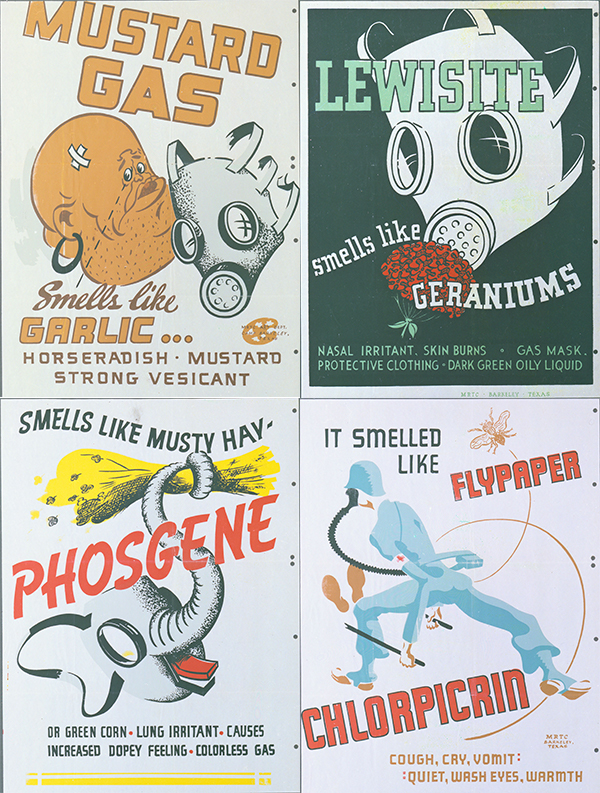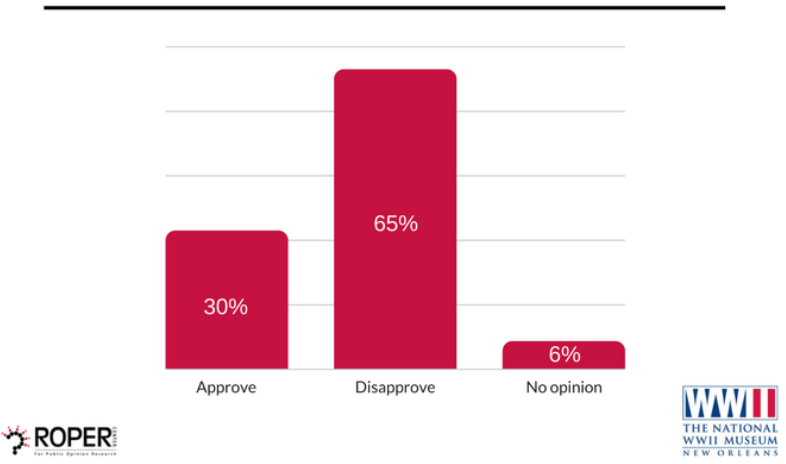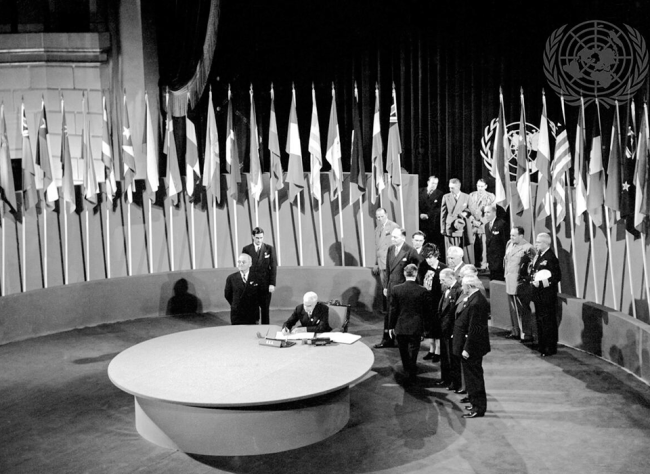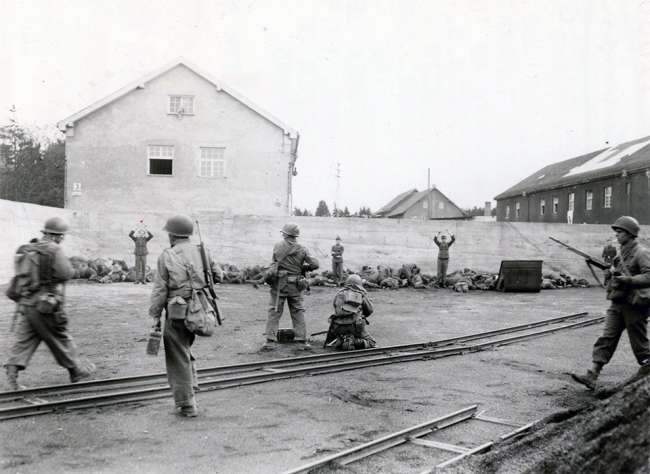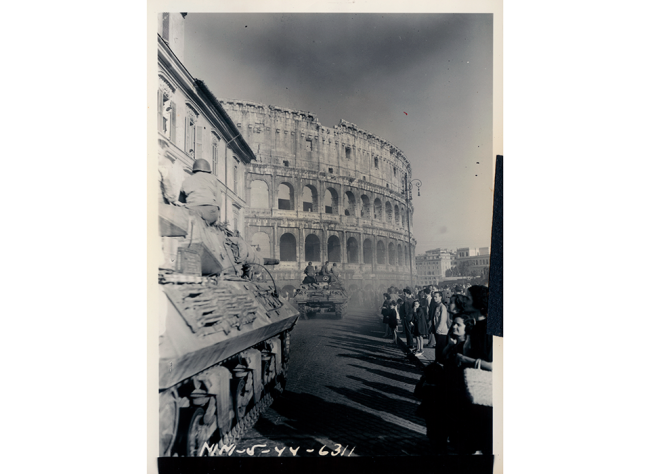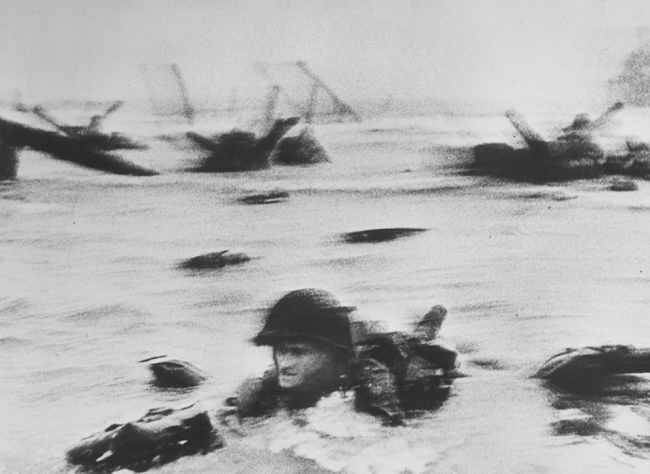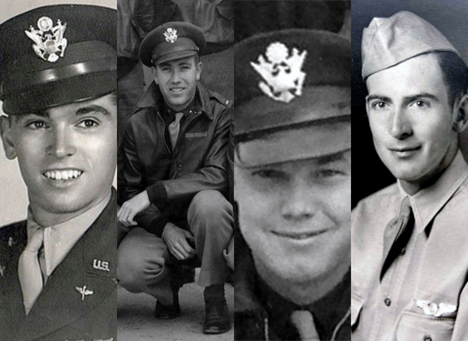Lead Image: Okinawa, April 13, 1945. US Coast Guard photo. National Archives, War & Conflict 1226.
Background: April 1, 2018, was both Easter and April Fools’ Day; a rare coincidence that last happened in 1956 and before that in 1945. April 1, 1945 was also the day the men of the Navy’s Fifth Fleet, together with 180,000 soldiers and Marines, invaded Okinawa in the largest amphibious assault in the Pacific Theater. For Americans, Okinawa was the last stop before the invasion of Japan. The Japanese knew this and they were ready to fight until the bitter end, much as they had at Iwo Jima—a brutal battle that had finally ended just the week before. The Japanese deployed Kamikaze (“divine wind”) suicide bombers, sinking over 30 Ships of the Fifth Fleet and killing over 4,500 sailors. By the time the Japanese commanding officer, General Ushijima, committed suicide on June 22 and effectively ending the battle for Okinawa, the Americans had suffered nearly 12,500 killed and 49,000 casualties. The losses were even greater for the Japanese with 110,000 military dead and 40,000-150,000 civilians dead. Operation Downfall, the code name for the invasion of Japan, was set to begin in October 1945. Massive casualties were projected as the Americans knew that Japan would not surrender and debates reignited about the use of poison gas against Japan.
How do you think the average American responded to this March 1945 poll:
If it would shorten the war in the Pacific, would you approve or disapprove of using poison gas against Japanese?
_____ Approve
_____Disapprove
_____No opinion
Educational posters about the dangers of poisonous gases. Courtesy of the National Museum of Health and Medicine, Otis Historical Archives.
The Results:
Source: Gallup Poll, March 1945, Roper Center for Public Opinion Research at Cornell University.
What Happened: As combat intensified in the Pacific, vigorous discussions occurred on the American home front and among generals about the use of poison gas. Many argued that using poison gas could shorten the war and save lives. However, despite the intense anti-Japanese feelings and the steady increase in budget and personnel for the Chemical Warfare Service (CWS) during the war, the United States never used lethal gases in the Pacific. Roosevelt himself had made it clear that for him the “use of such weapons has been outlawed by the general opinion of civilized mankind.” In a war where America told the world it was fighting to save civilization from totalitarianism, the President knew that using gas would come at a moral cost. Most importantly, public opinion was opposed to the use of gas. Most were still horrified by the images of mustard gas during World War One, some feared retaliation in kind while others agreed with Roosevelt that it was too inhuman and that the Americans would descend to the level of the Japanese and permanently tarnish their reputation.
That the US military never used gas was rooted in both the fact that plans for its use were deemed tactically unsound and that public opinion was very much taken into consideration. As more and more Americans lives were lost in the Pacific, public opinion slowly turned. In this March 1945 poll, 65% disapproved, down from 75% on September 1944. By June 1945, after the deadly Okinawa battle, disapproval went down to 54%. Following months of incendiary bombing of Japanese cities and civilians, the dropping of the atomic bombs in early August 1945 ended the debate about the use of poison gas.

WWII Polls
Public opinion polls give us unique insight into America in the WWII era. Each week, historians from the Institute of War and Democracy work with the archives of the Roper Center for Public Opinion Research to explore what Americans believed and how they felt about events and people related to the WWII years.
Dan Olmsted
Cite this article:
MLA Citation:
APA Citation:
Chicago Style Citation:
